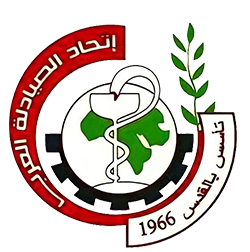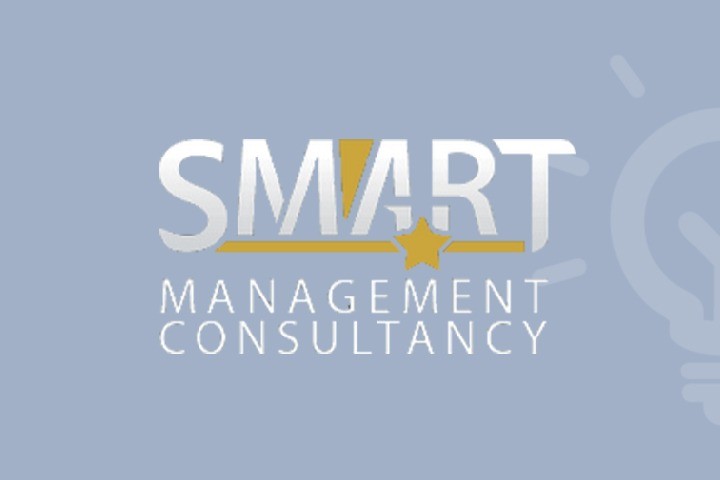You Will Learn
Chain of Infection
- Identify the six components of the Chain of Infection.
- Identify the Risk Factors for Infection Transmission.
- Learn the different types of causative agents (Pathogen) and how to develop strategies to overcome the agent.
- Identify the Different Types of Reservoirs and how to manage them to break the chain of infection
- Learn the Portal of Exit and Entry in both the reservoir and New Susceptible Host and how to use barriers and preventive measures against portal of exit and entry.
- Learn the different Modes of Transmission and how to develop barriers to overcome these modes of transmission.
- Identify the potential susceptible host and how to develop strategies to save the susceptible host from getting the infection.
- Learn common Public Health Infection Prevention and Control Terms, Definitions and Rates for example colonization, contamination, infection, incubation period, infectious period, Carrier and rates like case fatality rate, basic reproductive rate, secondary attack rate.
Standard Precautions Hand Hygiene Program Components, monitoring & auditing tools:
- What are the standard precautions?
- What are the elements of standards precautions
- Hand Hygiene: Components of Hand Hygiene Program
- Needful Resources for Hand Hygiene
- Learn the 7-Steps Hand Hygiene Practice: Explanation and Video Demonstration
- Identify the needful Posters to be communicated to staff, clients, and visitors regarding Hand Hygiene.
- The Component of the WHO Observation Form of Hand Hygiene
- How to develop and implement Audit Program for Hand Hygiene aiming for 100% compliance rate.
- Sharing results of previously published studies for the Hand Hygiene Compliance Rate among healthcare Professionals.
Standard Precautions (Part Two): The Proper use of PPE, Types, Donning and Doffing Process and when to use in different scenarios
- Identify the Different Types of Personal Protective Equipment
- Learn the different types of Gloves (Powdered, Non-Powdered, Latex Vs nitrile and Vinyl; Heavy-Duty Vs Non-Heavy Duty in CSSD and when and how to use them.
- Learn the different types of Face Masks/Respirator Non-Medical and Medical and the Respirator Types N, R, and P and their efficacy (95, 99, and 100) and when and how to use them.
- Learn the Healthcare Safety Goggle and Face shield and when and how to use them
- Learn the different types of Medical and Surgical gowns/aprons and when and how to use them
- Learn about the head shoe covers and when and how to use them
- Learning the Donning and Doffing process and sequences.
- Discuss different situations and incidents in the healthcare setting and identify what types of PPE to be used in such situations.
Standard Precautions (Part Three): Safe Injection Practices/ Developing and Implementing Sharp Injuries Program
- Identify the different types of safe single-use syringes advised by the World Health Organization (WHO)
- Learn the Safe Injection Practice advised by the WHO
- Learn the component of the Sharp Prevention Program
- Learn how to prevent sharp injuries
- Learn how to manage sharp injuries
- Learn how to analyze the root causes of sharp injures and learn to prevent a recurrence.
Standard Precautions (Part Four): Medical Equipment Cleaning and Environmental Hygiene,
- Learn the difference between Cleaning & Disinfection and the Principles for both
- Learn the precaution that should be taken by healthcare workers during the medical equipment cleaning
- Learn how to find Information for Use (IFU) for the allocated medical equipment for leaning
- Identify the different environmental areas to be cleaned in a healthcare facility
- Identify the more likely become contaminated surfaces with pathogens
- Learn how to develop a Cleaning and Disinfection Policy including the identified areas, resources for cleaning/disinfection, accountability, frequency, and auditing
- Identify different types of spills in a healthcare facility
- Identify the resources needed for managing spill
- Learn how to manage different types of spills and who is accountable as per service area
- Learn the requirements of Waste Management Room
Standard Precautions (Part Five and Six): Linen Management & Program to Prevent Respiratory Communicable Disease:
- Learn the principles of Linen management from the point of collection, processing, transportation, storage, and use.
- Learn the common area of non-compliance for proper linen management.
- Learn how to develop a Program to Prevent Respiratory Communicable Diseases.
- Learn the difference between Droplet infection and airborne Infection
- Identify high-risk healthcare professional groups for communicable respiratory infection
- Learn the difference between Medical Masks and Respirators and the pros and cons to avoid a respiratory infection
- Learn who is fit to use respirators by applying the OSHA Respirator Medical Evaluation Questionnaire
- Learn the Cough Etiquette
- Principles of Social Distance
Reprocessing and Sterilization
- The goal of Sterilization and Reprocessing
- Role of Sterilization Committee Role
- Components of Policy and Process on Reprocessing
- Layout and design of CSSD (Central Sterilization Service Department).
- Types of Instruments Used in the CSSD
- Challenges to sterilization: Factors affecting the quality of sterilization
Reprocessing and Sterilization ( Part-Two)
- Safe technique for transportation of Used/contaminated Instrument to CSSD
- Phase One: Inspection and Cleaning Process of contaminated instruments
- Phase Two Disinfection Process: Types of disinfectants and recommendations and how to use them.
- The importance of the rinsing after disinfections
- Phase Three: Drying Phase: Techniques and different types of dryers. Challenges with drying long luminated equipment/instruments
- Phase Four Packing: Identify the different Barrier Systems that are used according to the instrument: Header bags, pouches & reel, wrapping, Paper Bags, and performed and semi-performed rigid trays.
Reprocessing and Sterilization ( Part-Three)
- Phase Five Sterilization: Learn about the sterilization process.
- Learn about different types of Sterilizers (Autoclaves)
- Learn how to ensure the integrity and proper function of Sterilizer (Autoclave)
- Learn the different Modalities of Sterilization Indicators
- Learn about the Bowie and Dick Test and how to do it
- Learn about Steam Penetration Helix Test and How to do it
- Identify the principles and proper use of biological indicators
- Learn how to develop Sterilization Logbook
Storage, Transportation and Aseptic presentation of Sterilized Instruments
- Learn how to handle sterilized instruments after the end of the sterilization
- Learn How to avoid inappropriate handling of the sterilized pack
- Learn the appropriate way of transporting Sterilized items
- Aseptic Presentation of Sterilized Instrument in the Operating and Procedure Room.
- Learn the precaution of presentation of sterilized instruments in the Operating Theater and Procedure Room
- Learn how to inspect sterilized pack before use
- Learn how to read and open/peel small, moderate, and large size sterilized instruments
- Learn how to present and transfer sterilized instruments
Learn how to discard used instruments and pack according to the surgical procedure and protocols
Description
Infection prevention and control (IPC) is a scientific approach and practical solution designed to prevent harm caused by infection to patients and health workers. It is grounded in infectious diseases, epidemiology, social science, and health system strengthening. IPC occupies a unique position in the field of patient safety and quality universal health coverage since it is relevant to health workers and patients at every single healthcare encounter. In this training module, you will have a clear practical insight on infection prevention and control according to the requirements of different national and international accreditation standards in the GCC and other Middle East countries. You will learn how to do things and understand the common pitfalls of some practitioners to avoid them. You learn from an accreditation surveyor how to meet the standards and create evidence for compliance to the IPC standards. It is a True Hands-on-Practice Training.
Accreditations
Upon completion of the “Infection Prevention and Control Principles" course and successfully passing the exam, you will get a certificate approved by the Arab Pharmacists Federation and Smart


Infection Prevention and Control Principles
Some lectures will remain locked until you watch the previous ones.02:08
12:11
09:19
10:33
04:05
06:39
05:17
10:02
09:02
08:19
08:18
09:12
12:57
05:01
13:21
09:34
09:37
10:43
05:18
08:04
15:29
08:25
12:16
09:44
11:15
08:14
15:18
14:03
Recommended courses

Dr. Shukri Shawki
Strategic Management of Health Care Organizations
Last updated :
Strategic Management of Health Care OrganizationsThis course will take you in journey starting from knowing some facts and definitions of healthcare business, characteristics, uniqueness and strategic management principles, till reaching our destination by formulating the first phase of a strategic plan.

Smart Management Consultancy
Patient Safety
Last updated :
Patient SafetyPatient safety has become an essential target for most healthcare providers recently. This course will reveal types of medical errors & how to prevent them adding to patient safety goals issued by joint commission international JCI & other important patient...

Dr. Mohamed El-Naggar
Mastering The Business Achievement For Medical Professionals
Last updated :
Mastering The Business Achievement For Medical ProfessionalsThe course is a selected collection of applied techniques based on studies and real-life experiences that can guide you to control your business towards achievement, whether you work in a pharmacy, own it, or work in a pharmaceutical company



